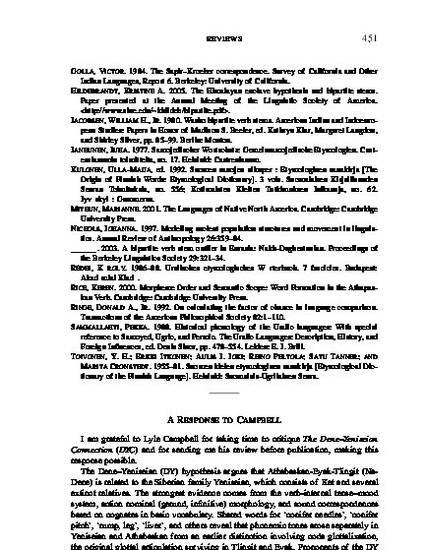
Article
A Response to Campbell
International Journal of American Linguistics
Document Type
Response or Comment
Publication Date
7-1-2011
Disciplines
Abstract
The Dene–Yeniseian (DY) hypothesis argues that Athabaskan-Eyak-Tlingit (NaDene) is related to the Siberian family Yeniseian, which consists of Ket and several extinct relatives. The strongest evidence comes from the verb-internal tense–mood system, action nominal (gerund, infinitive) morphology, and sound correspondences based on cognates in basic vocabulary. Shared words for ‘conifer needles’, ‘conifer pitch’, ‘rump, leg’, ‘liver’, and others reveal that phonemic tones arose separately in Yeniseian and Athabaskan from an earlier distinction involving coda glottalization, the original glottal articulation surviving in Tlingit and Eyak. Proponents of the DY hypothesis regard such evidence as indicative of genealogical affinity.
Subjects - Topical (LCSH)
Na-Dene languages--Grammar, Comparative--Yeniseian; Yeniseian languages--Grammar Comparative--Na-Dene; Languages in contact; Field theory (Linguistics)
Genre/Form
essays
Type
Text
Language
English
Format
application/pdf
Citation Information
Edward J. Vajda. "A Response to Campbell" International Journal of American Linguistics Vol. 77 Iss. 3 (2011) p. 451 - 452 Available at: http://works.bepress.com/edward_vajda/23/
